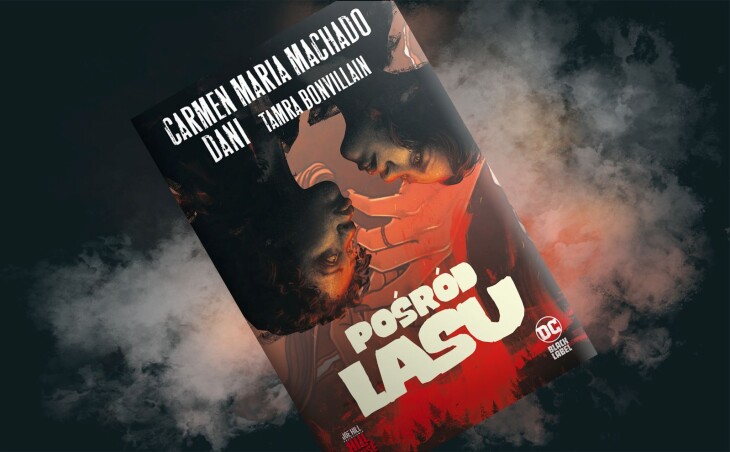Carmen Maria Machado and Dani give new meaning to body horror in their comics . It is a story like an earthquake, an apocalyptic, strong female voice.
Weird, weird fiction
I opened In the Forest late in the evening, on the basis of “reading something short and falling asleep”. I did not expect an earthquake; somehow I wasn’t counting on anything big in the Hill House Comics series, mainly due to Toni’s recent review , but also my moderate reactions to Hill’s own work. I ended up with eyes big “like the great round tower in Copenhagen” *, in total delight and generally too much emotion.
Machado and Dani tell the story of two girls who experience a sudden, complete break of a movie during a regular trip to the cinema. For some strange reason, they don’t panic even though they really want to understand what actually happened. Gradually, we learn that they live in a town that saw things not like that. At one time, there was an epidemic of forgetfulness, which was considered a kind of environmental disease affecting stressed, exhausted miners’ wives. The mine workers themselves suffered from other, standard ailments, and finally everyone could catch emphysema – the mines started to burn and did not go out for years. This is a plot inspired by real underground fires that have been smoldering in America for decades, and you could also read about them in The Swamp Monster .
The town is the weirder the further we follow the main characters. First, we see smoke wafting from cracks in the ground, then monsters come, finally a witch appears, and with her the motif of a magical spring. You know the last two very well from fairy tales, but Machado played them in her own way. What would the average person’s life be like if these fairy-tale phenomena existed in the real world, along with technological progress and moral conservatism? Who would benefit from them? And how?
Sinks, crevices, eternal fire
In the woods it is a woman’s scream rising above the rooftops of the world. In the collapsing town itself, he is completely mute – it is he who expresses himself through the elements of body horror . Dani and Machado showed how stress, denial and violence are imprinted on the body, how they transform victims into creatures on the verge of nightmare and fairy tales. I don’t want to reveal too much, but the visual metaphors are apt, striking and yet not disgusting – it’s another creative transformation of the genre. The authors rightly said that the horror is already in tune, although the pain and emotions remain universal and very vivid.
All this comic book is focused on the body and experiencing the world through it, beyond rationality. It shows how anger, despair and disagreement with everyday life are revealed in him. This is a model example of using a modern interpretation of a fairy tale, which is a metaphor for maturation, including sexual maturation. Model because it is not limited to psychotherapeutic analyzes; these are only a reflection point, a return to the realm of magic. In this way, the fairy tale suddenly becomes not only dark, but also surprisingly believable and emotional.
In the woods, it can be provocative in a girlish way, after all, teenagers like dirty words and naturalistic jokes. It is insanely romantic. This plot does not happen between the two main characters, and yet also remains purely feminine. The comic is also about friendship, it’s kind of like Lumberjanes for real. In the afterword to Jakub Bielawski’s Moths, Wojciech Gunia wrote that weird fiction focuses on the presented world and thus often loses the depth of the characters. He should read the story of Machado and Dani, he will find realistic girls in a world full of evil. In the end, very similar to ours.
* this is my beloved quote from an Andersen fairy tale

